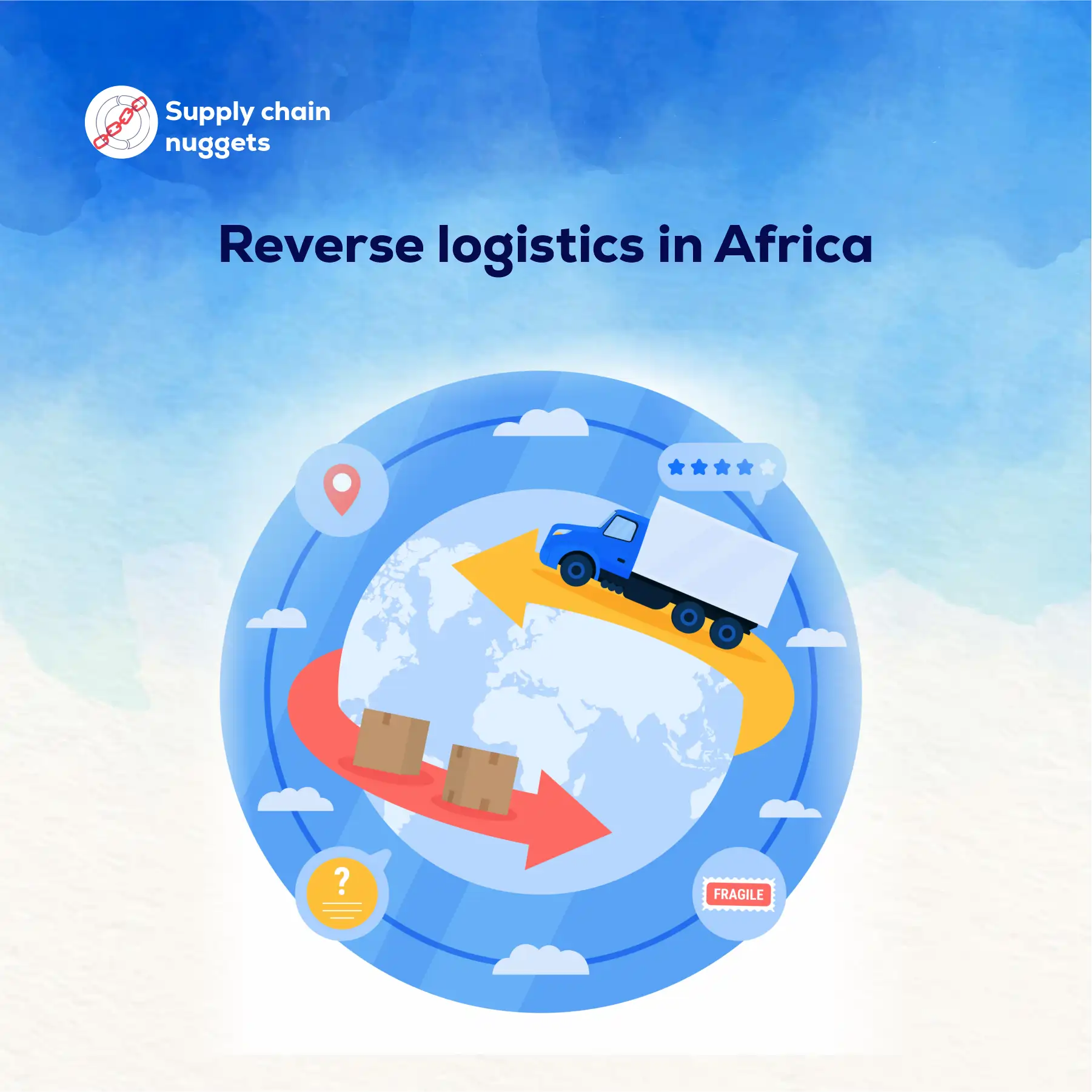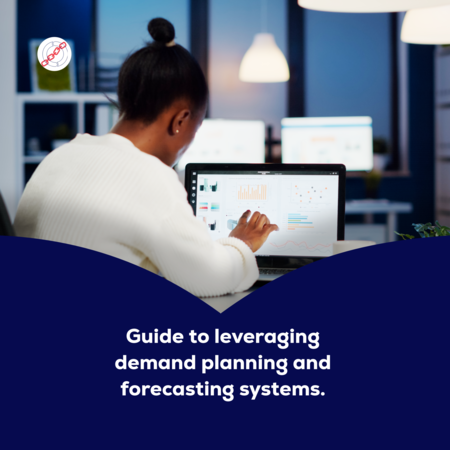
Reverse logistics in Africa is gaining traction as the continent continues to open up to online businesses, even though these businesses and their supply chains have slightly different realities than the rest of the world.
Logistics and Supply chain management usually focus on delivering goods and services from the manufacturer to the consumer. However, in recent years, more businesses have focused on creating or streamlining existing paths for goods to move from customers back to the businesses or their supply chains. This phenomenon is what is known as reverse logistics.
It is the process of returning a product from the consumer to the business that initially sold it to the consumer. It is prevalent in the goods supply chain, and the cost is often on the business.
Types of Reverse Logistics in Africa
Africa presents a unique experience for reverse logistics operations because of the infrastructure deficit and informal business operations. Because of this, there are four common types of reverse logistics operations on the continent.
- Product Return
- Refurbishment and Remarketing
- Unsold Products
- Rentals
1. Product Return
This is the most popular type of reverse logistics on the continent, especially with the rise of e-commerce.
Logistics has become more complicated for businesses, leading to many delivery errors. Product returns are caused by errors in the order processing or delivery process. However, there are also cases of fraudulent returns and situations where customers change their minds. Whatever the reason, the business shoulders the brunt of the responsibility and cost.
Product returns can be cost incentives, but with innovative strategies, more businesses on the continent can manage the process efficiently.
2. Refurbishment and Remarketing
This type of reverse logistics is undertaken to repurpose finished or sold goods.
In this scenario, a manufacturer buys back sold goods from the consumer and removes the viable materials within the product to upgrade, repackage, clean, or repair them before reintroducing them into the market. The consumer often bears the cost of this type of reverse logistics. Many times, they have to take the goods to a particular facility themselves, where the business can vet and then receive them.
Refurbishment and remarketing have been around for a long time in Africa, and they are quite common in the automotive and electronic gadget industries.
3. Unsold Products
This type of logistics is not necessarily between manufacturers and their final consumers.
It is between Manufacturers and retailers. In Africa, most businesses, especially manufacturers, release their products to retailers on credit. This method facilitates sales and saturates the market with its products. In cases where these businesses cannot or have difficulty selling the products, instead of manufacturing other products, the business can repossess the product and resell it to other retailers who can or are selling better.
This way, they save money and redirect resources more efficiently.
4. Rentals
In Africa, many business models rely on renting out products to consumers.
This may entail leasing products to the consumer for a period of time, usually days or weeks, and then collecting the product after the agreed-upon time elapses. This business model is usually prevalent in car hires or mobile rental properties, and it is a thriving industry.
However, reverse logistics also plays a role here, and depending on the industry, either the customer or the business bears the burden of the returns process.
Benefits of Reverse Logistics in Africa
As competition ripens on the continent, businesses are finding ways to stand out, and reverse logistics has emerged as one of the winning formulas for doing so. This is especially the case in the e-commerce industry. But why are more businesses embracing the concept?
1. Customer Satisfaction
With businesses going online, traditional brick-and-mortar stores continue to shut down at an alarming pace, as highlighted in this article.
This also means that consumer interactions on a face-to-face level are significantly impacted. To increase customer satisfaction, businesses must find other means to guarantee consumer loyalty. Take the fashion industry, for example. Businesses in the industry used to allow consumers to try on clothes before purchasing, but today, with sales moving online, it is a little difficult.
Retail businesses in African fashion are increasingly selling to consumers, with the chance that they may not fit even when consumers buy their size category.
2. Cost Savings
Supply chains in Africa use reverse logistics as a cost-saving method.
This idealogy is prevalent in refurbishing and unsold goods, a type of reverse logistics. Instead of spending more resources on raw materials and the production process. These supply chains can buy back used goods from consumers at a cheaper cost and use parts from those goods to make new or refurbished products at a cheaper cost.
The same applies to unsold goods.
Instead of hoping the retailer eventually sells the goods and risks potential damage, the business or supply chain can recover such goods and sell to other retailers while reducing waste and production costs.
3. Environmental Sustainability
Africa has a waste problem that negatively impacts the continent.
One solution to that problem is reverse logistics. It is a great method of reducing waste and its environmental impacts. For instance, plastic is a terrible waste for the environment but is highly reusable.
Businesses and supply chains can retrieve and reuse them in future products instead of making new ones and adding to the waste problem.
Another great example is the battery.
Their recycling rate is close to 100%, making reverse logistics a very good investment.
4. Improved Inventory Management
Through reverse logistics, supply chains can better manage or regulate their inventories by tracking and analyzing the reasons for returned goods.
This enables them to improve their supply process and take corrective measures to reduce future return rates or the risk of customer dissatisfaction. Let’s face it: Consumers do not like returning and waiting extra days for their goods to arrive, especially when they need them urgently.
A supply chain with a high return rate risks losing consumers.
Challenges of Reverse Logistics in Africa
There are unique challenges supply chains and businesses in Africa face when it comes to the issue of reverse logistics. This makes it perhaps more challenging for these businesses and their supply chain to implement effective strategies.
1. Infrastructural Limitations
Poor infrastructure and transportation modes still plague the continent, negatively impacting businesses’ and supply chains’ reverse logistics efforts. Poor road networks, warehousing, power, and a lack of specialized equipment make it challenging and expensive to seamlessly manage the flow of goods in a reverse logistics operation.
2. Consumer Behavior and Attitudes
As much as businesses and supply chains hate to admit it, consumer behavior and attitudes can be a big issue in reverse logistics.
There are countless stories of consumers buying a perfectly good product and then trying to return it for no justifiable reason. Because of a lack of awareness and trust on the part of consumers, they favor the pay-on-delivery policy, which is a double-edged sword. Businesses can deliver goods, and the consumers are nowhere to be found or flatly refuse to collect the products.
Now, because these businesses are yet to collect money, there is very little they can do about it.
All these can make reverse logistics very expensive and frustrating for businesses and supply chains.
3. Resource Constraints
In Africa, Supply chains and businesses still struggle with limited access to resources such as technology, finances, information, and trained personnel. These can make it difficult to navigate effectively and invest in reverse logistics within the continent.
4. Poor Supply Chain Visibility
Supply chain visibility is essential for the seamless management of the reverse supply chain.
However, certain elements must be in place for this to happen. Examples of such factors are technology and the flow of information across the supply chain. When there is poor supply chain visibility, stakeholders within the supply chain find it difficult to effectively track, monitor, and manage reverse logistics in Africa.
Strategies to Optimize Reverse Logistics in Africa
An optimized reverse logistics operation accounts for speed, cost, and efficiency. To actualize this, supply chains and businesses must implement well-thought-out strategies.
In this section of the article, we review five of these strategies.
1. Centralized Return Centers
A central returning facility or warehouse allows your business or supply chain to manage return goods effectively. This entails sorting, routing, and allocating returned goods to the next phase of the return process.
2. Streamline Return Process
To enjoy an efficient return process, you can start by helping the consumers by streamlining the process. You can achieve this through easy-to-use options, convenient return options, and clear instructional manuals.
3. Leverage Technology
The impact of technology on modern supply chains and logistics cannot be overemphasized. This makes it much more relevant to your reverse logistics process. By leveraging technology solutions and software, you can automate and streamline the process on the back end.
You can also track, monitor, and analyze the reverse logistics process through technology, conveniently enhancing decision-making capabilities.
4. Collaboration with suppliers
Developing close collaborations and partnerships with suppliers such as logistics and recycling companies helps you build a robust reverse logistics network. This helps you optimize the entire process and seamlessly link to your supply chain.
5. Optimize Transportation Modes
Transportation is quite poor on the continent, but using a combination of transportation modes, tools, and vehicles can enhance reverse logistics, making the process less expensive and convenient for your supply chain or business.
Final Thoughts
Although it is a relatively new concept for businesses and supply chains, reverse logistics is an increasingly favored concept on the continent. However, getting the most out of it can be tricky. The article provides a simple guide to ensuring businesses know how to leverage the concept of reverse logistics effectively in Africa.
FAQ on Reverse Logistics in Africa
1. What makes reverse logistics important?
Reverse logistics is crucial for optimizing resource utilization, decreasing waste, and increasing consumer satisfaction. It reduces environmental impact, increases overall supply chain efficiency, and enables firms to recoup value from returned goods.
2. What are the common causes of product returns in reverse logistics?
In reverse logistics, product returns can happen for various reasons, including client discontent, product flaws, wrong shipments, expired goods, overstock circumstances, and product recalls.
3. How can businesses measure the success of their reverse logistics initiatives?
Reverse logistics can be evaluated for effectiveness using key performance indicators (KPIs) such as return rates, processing times, customer satisfaction scores, cost savings, and environmental impact measurements. These metrics should be regularly monitored and analyzed to assist firms in finding areas for improvement and promote ongoing optimization.
4. Are there specific regulations or compliance requirements related to reverse logistics?
Yes, certain laws and compliance standards may apply to reverse logistics, depending on the business and the type of returned goods. These may include recycling requirements, product recall compliance, safe disposal of hazardous items, and data privacy considerations when managing returned goods.
5. How can businesses dispose of or recycle returned products in reverse logistics?
Businesses should handle the correct disposal or recycling of returned goods per local laws and in cooperation with authorized recycling or disposal facilities. As a result, proper waste management techniques are encouraged, and environmental regulations are adhered to.

Obinabo Tochukwu Tabansi is a supply chain digital writer (Content writer & Ghostwriter) helping professionals and business owners across Africa learn from real-world supply chain wins and setbacks and apply proven strategies to their own operations. He also crafts social content for logistics and supply chain companies, turning their solutions and insights into engaging posts that drive visibility and trust.








